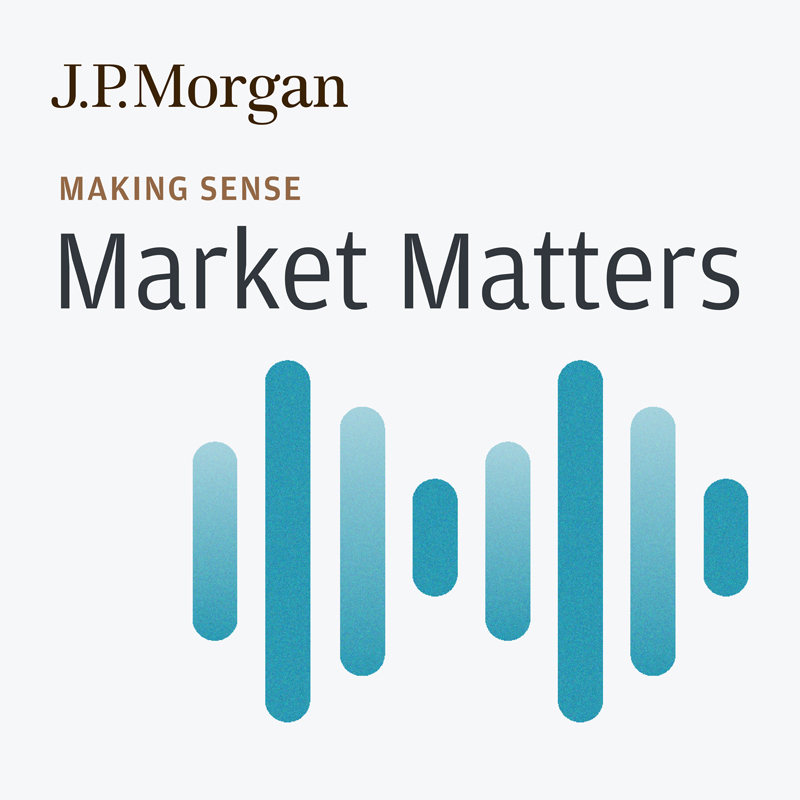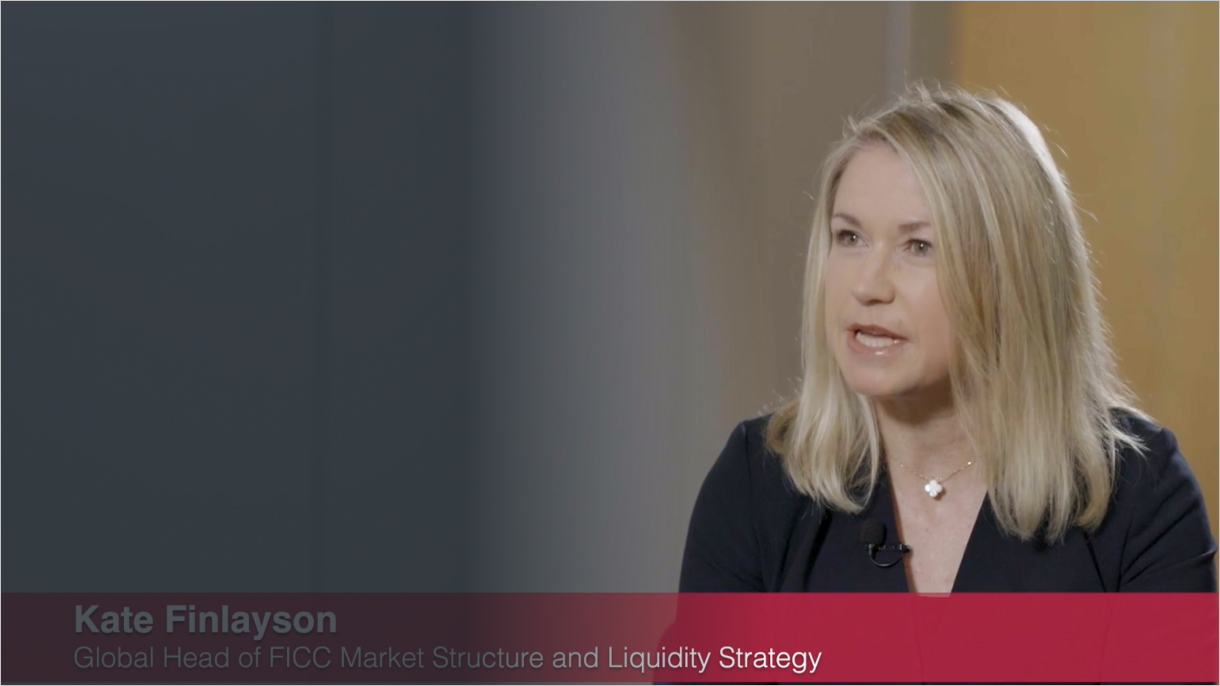Strategic discussions on how various market structure changes may impact your business
Market
Structure
Delivering thought leadership to help clients
cut through the noise

By monitoring, analyzing and commenting on the emergence of execution trends and policy initiatives across global markets, the team is able to provide insights and perspectives on the evolving marketplace.

Why J.P. Morgan?
Through engagement with our diverse client base, key industry bodies and actively participating in industry events, our FICC and Equity Market Structure teams can provide valuable insights to stay on top of policy and microstructural developments.
Key benefits
-

Succinct updates
Content highlighting the most pertinent developments and why they matter
-

Unique coverage
+40 different topics, from pre-to post-trade and for both voice and electronic execution
-

Global reach
On-the-ground insights into APAC, NAMR and EMEA markets, with content reaching +70 countries
-

Versatility
Adapting to suit client segments, from asset managers, hedge funds and pension fund managers, to insurance companies, corporates and banks
Capabilities
Monthly, quarterly and focused reports that keep clients up-to date on drivers of market structure change
Certain market structure trends deserve a dedicated report to further explore a topic. Our In Focus reports take a look into top trends and new market structure developments re-shaping FICC markets.
Data led observations on trading techniques
Listen to the team and featured guests on Market Matters, our series on the global markets landscape. Market Matters is part of J.P. Morgan’s Commercial & Investment podcast, Making Sense.
Join the discussion for insightful perspectives from the team and your peers.
Podcasts

Subscribe
The impact of EMIR 3.0 on Euro swaps trading
Meridy Cleary from the FICC Market Structure team and senior rates trader Roxane Blanc delve into one of the most pressing market structure themes: EMIR 3.0. They explore the implications of the new EU clearing rules on euro derivatives, liquidity and trading strategies across Europe. With the active account requirement front-and-center, they discuss the operational and representativeness requirements, and the strategic decisions firms face as they prepare for the June implementation date. Tune in to understand how these regulatory changes, alongside the Dutch pension reform, are reshaping the financial landscape.

Subscribe
Navigating Asia’s bond and equity markets
In this episode, host Meridy Cleary from the FICC Market Structure team engages in an insightful discussion with Clare Witts, head of Equity APAC Market Structure. They delve into the evolving trading landscape across Asia's fixed income, FX and equities markets. Listeners will gain valuable insights into how market participants are adapting to the rapid changes and what to expect in the upcoming year.

Subscribe
FICC Market Structure: The evolving execution ecosystem
Which asset classes are next to be electronified and how is the network effect driving trading trends? Head of Digital Markets, Eddie Wen joins Kate Finlayson, head of FICC Market Structure & Liquidity Strategy, to discuss automation in trading, the blurring lines between retail and institutional markets and how data can work to optimize business.

Subscribe
FICC Market Structure: Tapping into Asia’s markets
How are financial markets in Asia attracting increased foreign investor participation? Leland Price and Meridy Cleary from the FICC Market Structure & Liquidity Strategy team discuss some of the most impactful developments contributing to the growing demand and liquidity in fixed income and FX markets in the region.

Subscribe
FICC Market Structure: Blockchain’s case for liquidity
Is blockchain still a pipedream? In a world of increasing trading costs and capital constraints, could distributed ledger technology facilitate greater liquidity and efficient risk management? Can DLT realistically help address shortened settlement requirement requirements and cross-border funding challenges? Head of Markets DLT, Scott Lucas joins Kate Finlayson, global head of FICC Market Structure & Liquidity Strategy, to consider the changing market conditions and regulatory proposals driving more engagement in distributed ledger technology.

Leadership
“FICC markets are constantly evolving. Whether there are macro factors at play, emerging execution trends or policy initiatives which could shape access to liquidity, our global Market Structure team provides key insights into these developments, enabling our clients to better prepare for current and future drivers of change.”

Kate Finlayson
FICC Market Structure and Liquidity Strategy J.P. Morgan
Equities Market Structure
“The global equities market structure landscape has become more complex in recent years. For this reason, our equities Market Structure teams work together across regions to deliver timely updates on the key structural aspects impacting equities execution quality around the world.”

Chris Andrew
Equities Market Structure J.P. Morgan
Contact us
icon
Loading...
Related insights
-

Markets
The e-Trading Edit
See results from The e-Trading Edit, an institutional survey where traders across asset classes and regions share their top predictions. How do yours compare?
-

Securities Services
DataQuery: Data and analytics to unlock investment insights
-

Markets and Economy
Execute
Electronic trading solutions available on J.P. Morgan Markets
FOR INSTITUTIONAL & PROFESSIONAL CLIENTS ONLY – NOT INTENDED FOR RETAIL CUSTOMER USE
This material has been prepared by J.P. Morgan Sales and Trading personnel and is not the product of J.P. Morgan’s Research Department. It is not a research report and is not intended as such. This material is provided for informational purposes only and is subject to change without notice. It is not intended as research, a recommendation, advice, offer or solicitation to buy or sell any financial product or service, or to be used in any way for evaluating the merits of participating in any transaction. Please consult your own advisors regarding legal, tax, accounting or any other aspects including suitability implications for your particular circumstances. J.P. Morgan disclaims any responsibility or liability whatsoever for the quality, accuracy or completeness of the information herein, and for any reliance on, or use of this material in any way. This material is provided on a confidential basis and may not be reproduced, redistributed or transmitted, in whole or in part, without the prior written consent of J.P. Morgan. Any unauthorized use is strictly prohibited. The products and/or services mentioned herein may not be suitable for your particular circumstances and may not be available in all jurisdictions or to all clients. Clients should contact their salespersons at, and execute transactions through, a J.P. Morgan entity appropriately licensed in the client’s home jurisdiction unless governing law permits otherwise. This material is a “solicitation” of derivatives business only as that term is used within CFTC Rule 1.71 and 23.605. Where this material is an “investment recommendation” as that term is defined in MAR visit: www.jpmm.com/#mardisclosures. This material is subject to terms at: www.jpmorgan.com/salesandtradingdisclaimer.
© 2023 JPMorgan Chase & Co. All rights reserved. J.P. Morgan is a marketing name for investment banking businesses of JPMorgan Chase & Co. and its subsidiaries and affiliates worldwide. Bank products and services, including certain lending, derivative and other commercial banking activities, are offered by JPMorgan Chase Bank N.A. (JPMCB), including through its authorized branches and other global affiliates registered with local authorities as appropriate. Securities products and services, including execution services, are offered in the United States by J.P. Morgan Securities LLC (JPMS LLC), in EMEA by J.P. Morgan Securities plc (JPMS plc) where permitted and in other jurisdictions worldwide by other appropriately licensed global affiliates. JPMCB, JPMS LLC and JPMS plc are principal subsidiaries of JPMorgan Chase & Co. For information on which legal entities offer investment banking products and services in each jurisdiction, please consult: www.jpmorgan.com/ib-legal-entities. For important disclosures in respect of securities transactions, please consult: www.jpmorgan.com/securities-transactions and in respect of over-the-counter equity derivatives transactions, please consult: www.jpmorgan.com/otc-equity-derivative-transactions.
For additional regulatory disclosures, please consult: www.jpmorgan.com/disclosures.